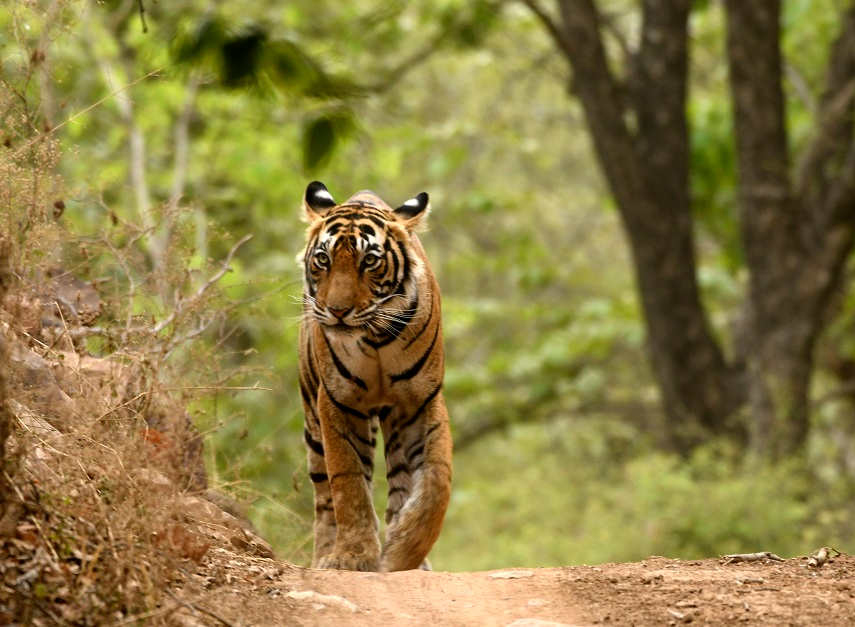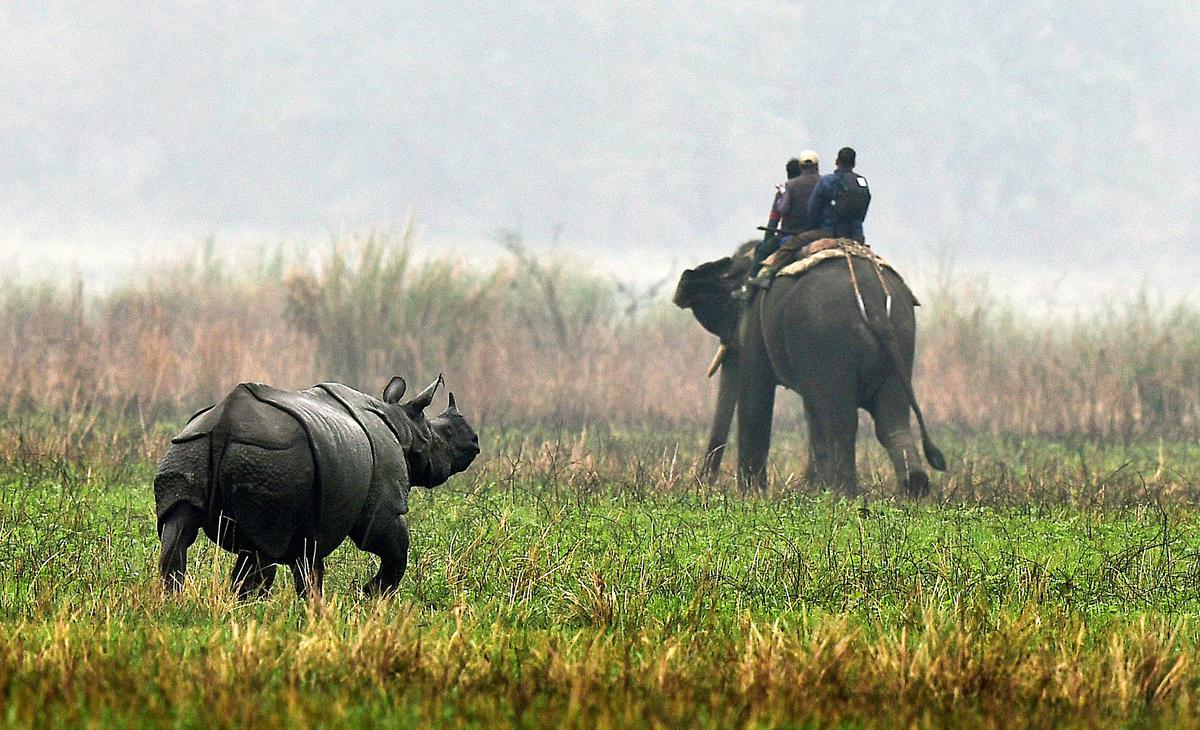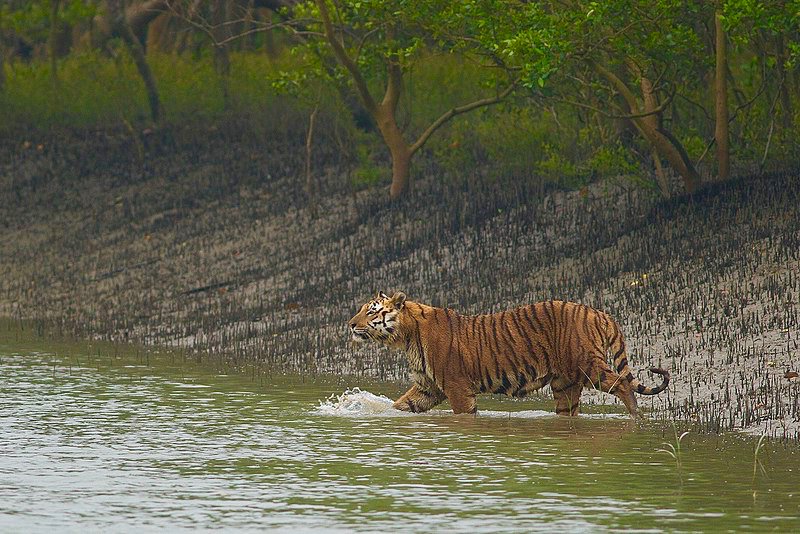India, a land of enchanting diversity and pristine landscapes, is adorned with an array of national parks that epitomize its rich biodiversity. From the rugged terrains of the Himalayas to the lush forests
of the Western Ghats, these protected areas showcase the incredible variety of flora and fauna that call India home. In this comprehensive guide, we present the top 5 national parks that stand as the epitome of India’s wildlife wonders, beckoning both nature
enthusiasts and adventure seekers alike.
1. Jim Corbett National Park: Roaming with the Tigers

Nestled in the heart of Uttarakhand, Jim Corbett National Park is a living testament to India’s dedication to wildlife conservation. Named after the legendary British hunter turned conservationist, the park is celebrated
for its iconic Bengal tigers. It’s the oldest national park in the country, offering a thrilling rendezvous with nature.
The diverse landscapes within the park, ranging from dense forests to grasslands, house an array of wildlife. Aside from tigers, you can spot leopards, elephants, deer, and a wide range of avian species. Jim
Corbetta safari booking like Jeep safaris and guided tours provide an intimate connection with the wilderness and an opportunity to witness these majestic creatures in their natural habitat.
2. Ranthambore National Park: Where History Meets Wilderness

Ranthambore National Park, situated in Rajasthan,
is a captivating fusion of history and wildlife. The majestic Ranthambore Fort, intertwined with the park’s rugged terrain, adds an aura of mystique to the experience. However, it’s the iconic Bengal tigers that truly steal the show here.
The park’s deciduous forests and water bodies provide an ideal habitat for these elusive predators. Jeep safaris and canter rides take visitors on an exhilarating journey through the park, increasing the chances of
spotting tigers, along with other residents like leopards, sloth bears, and various species of deer. Ranthambore’s unique blend of history and wildlife makes it a must-visit destination for nature enthusiasts.
3. Kaziranga National Park: Where Rhinos Roam Free

Venturing to India’s northeastern corner, we encounter the enchanting Kaziranga
National Park Safari. This UNESCO World Heritage site is renowned for its successful conservation of the one-horned Indian rhinoceros. Sprawling across the floodplains of the Brahmaputra River in Assam, Kaziranga boasts unique landscapes
that support a diverse array of wildlife.
The park’s acclaimed elephant safaris offer an opportunity to observe rhinos, elephants, wild water buffaloes, and an assortment of bird species up close. Tigers and leopards also inhabit the park, though they often
remain elusive. Kaziranga’s commitment to rhino conservation and its breathtaking landscapes make it a true gem of India’s wildlife heritage.
4. Bandhavgarh National Park: Tiger’s Kingdom

Nestled in the heart of Madhya Pradesh, Bandhavgarh National Park exudes a sense of regal charm, owing to its substantial tiger population. This park is not only known for its density of tigers but also for its lush
landscapes, ranging from dense forests to open meadows.
Bandhavgarh Safari Booking and specialized photography
tours allow visitors to witness the charismatic tigers in their natural habitat. Beyond the tigers, the park is also home to a variety of wildlife, including leopards, sloth bears, and diverse avian species. Whether you’re an avid photographer or a wildlife
enthusiast, Bandhavgarh promises an enthralling experience.
5. Sundarbans National Park: Mangrove Majesty

Exploring the eastern fringes of India unveils the mesmerizing Sundarbans National Park. Shared between India and Bangladesh, this unique UNESCO World Heritage site boasts the largest mangrove forest in the world.
The park’s intricate network of tidal waterways and marshlands is home to the elusive royal Bengal tiger.
Navigating the waterways on specialized boats offers a chance to witness the park’s extraordinary biodiversity, including saltwater crocodiles, spotted deer, and various bird species. The dynamic interaction between
land and water in the Sundarbans creates a distinct and captivating wildlife experience.
In Conclusion
India’s top 5 national parks are a testament to the country’s commitment to preserving its natural heritage and fostering a deep connection between humans and wildlife. From the awe-inspiring Himalayan landscapes
to the tranquil mangrove forests, each park offers a unique opportunity to immerse yourself in the beauty and diversity of India’s wildlife.
Whether you’re an adventure seeker, a wildlife enthusiast, or simply someone who appreciates the wonders of nature, these national parks beckon you to embark on an unforgettable journey. Witness the magnificence of
tigers, rhinos, elephants, and more in their natural habitats, and create memories that will last a lifetime. Plan your expedition to these captivating national parks and discover the splendor of India’s wilderness like never before.